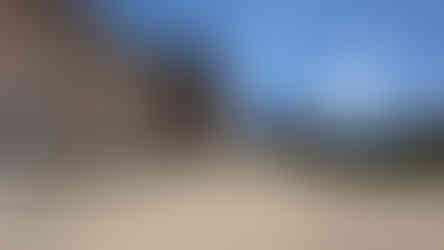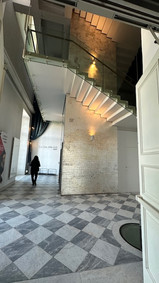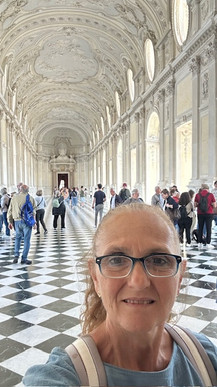Royal Palace of Venaria Reale - Reggia di Venaria Reale
- Maria Scuor
- Jun 4
- 13 min read
Italiano sotto ogni sezione

While our friend Tara was visiting from Canada, we picked up our friend Franco from Vercelli and drove an hour away to the Royal Palace of Venaria Reale or Reggia di Venaria Reale and a Residence of the House of Savoy. Located in the municipality of Venaria Reale and 10 minutes from Turin in the region of Piedmont.
The House of Savoy – La Casa Savoia
Casa Savoia in Italian or Maison de Savoie in French is a royal house or dynasty of Franco-Italian origin that was established in 1003 in the region of Savoy in the Western Alps between Occitania and Piedmont which now lies mostly within the southeastern region of France.
The family grew in power first ruling the County of Savoy, a small Alpine County northwest of Italy, and later ruling the Kingdom of Sicily, the Kingdom of Sardinia, and then ruling from Piedmont to Sardinia, which was the predecessor state of the Kingdom of Italy and today the Italian Republic. They also ruled the Kingdom of Spain briefly in the 19th century. The Savoyard kings of Italy were:
Victor Emmanuel II – from 1861 to 1878 when he died. He was the first king of the Savoy and an independent and united Italy
Umberto I – from 1878 until his assassination in 1900. His reign expanded into Africa and he created the Triple Alliance with Italy, Germany and Austria-Hungary
Victor Emmanuel III – from 1900 until he renounced his title in 1946. He also reigned as Emperor of Ethiopia and King of the Albanians after the invasions of these countries
Umberto II – was given the throne by his father and was the last King of Italy between May 9, 1946 to June 12 1946, because of the referendum that removed the monarchy. He is known as the “May King”.
The June 2nd 1946 referendum asked voters to check one box on the ballot; “Repubblica or Monarchia”. Almost 90% of the population voted with 54.27% voting for the Repubblica and 45.73% voting for the Monarchia. Meaning the Monarchy was abolished and King Umberto II as well as other male members of the House of Savoy left the country an were banned from returning. Umberto lived the rest of his life in exile in Cascais, Portugal and died in Cantonal Hospital in Geneva in 1983.

Thank you to Wikimedia: Alfonso Capriolo, for the referendum ballot
Grazie a Wikimedia: Alfonso Capriolo, per foto del scheda referendaria
The Italian Constitution not only required the male members to leave Italy but it also forbade any amendments that would change the republican form of government. Meaning there could be no efforts to restore the monarchy unless a new constitution was adopted. However, Vittorio Emanuele, son of King Umberto II, lobbied the Parliament of Italy and filed a case at the European Court of Human Rights, that the exile violated his human rights.
He also renounced any claim to Italy’s crown jewels which had been stored in a deposit box in the Bank of Italy since he left. He stated publicly that the crown jewels “are no longer ours”, referring to the house of Savoy but hoped they would be publicly displayed. However, the royal family asked for the jewels back in 2021 and sued the Italian government and the Bank but in 2022 they lost and they were not returned.
On October 23rd 2002, the provision in the constitution barring the male members of the former house was repealed, however, part of the deal was that Vittorio Emanuele signed and agreement renouncing all claims to the defunct thrown and recognize the Republic as the only lawful government of Italy. He returned to Italy on December 23rd 2002 and died in Geneva Cantonal Hospital, Switzerland on 3 February 2024, aged 86. Leaving his son Emanuele Filiberto, Prince of Venice as his heir, however Emanuele announced his intention to renounce his claim to the throne in favour of his daughter, Princess Vittoria of Savoy, when he felt she was ready to succeed.
Savoy History - Storia di Savoia
Reggia di Venaria Reale
Mentre la nostra amica Tara era in visita dal Canada, siamo andati a prendere il nostro amico Franco da Vercelli e abbiamo guidato per un'ora fino alla Reggia di Venaria Reale e residenza di Casa Savoia. Situato nel comune di Venaria Reale e a 10 minuti da Torino nella regione Piemonte.
La Casa Savoia
House of Savoy in inglese o Maison de Savoie in francese è una casa reale o dinastia di origine franco-italiana che si stabilì nel 1003 nella regione della Savoia nelle Alpi occidentali tra l'Occitania e il Piemonte, che ora si trova per lo più nella regione sud-orientale della Francia.
La famiglia crebbe al potere, governando prima la Contea di Savoia, una piccola contea alpina a nord-ovest dell'Italia, e successivamente il Regno di Sicilia, il Regno di Sardegna, e poi governando dal Piemonte alla Sardegna, che era lo stato predecessore del Regno d'Italia e oggi la Repubblica Italiana. Governarono anche brevemente il Regno di Spagna nel XIX secolo. I re savoiardi d'Italia erano:
Vittorio Emanuele II – dal 1861 al 1878 quando morì. Fu il primo re dei Savoia e un'Italia indipendente e unita
Umberto I – dal 1878 fino al suo assassinio nel 1900. Il suo regno si espanse in Africa e creò la Triplice Alleanza con l'Italia, la Germania e l'Austria-Ungheria
Vittorio Emanuele III – dal 1900 fino a quando rinunciò al suo titolo nel 1946. Regnò anche come imperatore d'Etiopia e re degli albanesi dopo le invasioni di questi paesi
Umberto II – era salito al trono dal padre e fu l'ultimo re d'Italia tra il 9 maggio 1946 e il 12 giugno 1946, a causa del referendum che rimosse la monarchia. È conosciuto come il "Re di Maggio"
Il referendum del 2 giugno 1946 chiese agli elettori di spuntare una casella sulla scheda; "Repubblica o Monarchia". Quasi il 90% della popolazione ha votato, con il 54,27% per la Repubblica e il 45,73% per la Monarchia. Ciò significa che la monarchia fu abolita e il re Umberto II, così come altri membri maschi di Casa Savoia, lasciarono il paese e erano vietati di tornare. Umberto cusse il resto della sua vita in esilio a Cascais, in Portogallo, e morì nell'Ospedale Cantonale di Ginevra nel 1983.
History of the Royal Palace – Storia del Palazzo Reale
In the 16th century this area was divided into Altessano Superiore and Altessano Inferiore. Duke Emmanuel II, ruler of the Savoyard state from 1638 - 1675 purchased the lands from the Milanese Birago family and the place was later renamed “la Venaria, because it was intended for hunting.
The upper part (Superiore) was chosen by the Savoy as the centre of their hunting lodge and the lower part remained Altessano, a hamlet of Venaria. These two parts are divided by the railway. The palace was designed in 1658 by the architect Amedeo di Castellamonte and work began in 1659 and completed in 1679.
After the French destroyed buildings during the war against the Savoy in 1693, Vittorio Amedeo II of Savoy restructured and expand the property. Some work was completed and started under Michelangelo Garove but when he died Filippo Juvarra, the most important architect of the House of Savoy took over. He completed the famous Galleria Grande in 1716, created the Labyrinth and its pavilion in the garden and constructed the chapel of Sant’Uberto.
During the Napoleon era the complex was transformed to the nerve centre of the Savoy Calvary, with military riding school and a stud farm. After Napoleon was defeated the Venaria Palace became part of the Royal Military Property and the decorations and furnishings were sent to other Savoy palaces and castles.
From 1851 to 1943 the military function of the complex housed the Horse Land Artillery Regiment, the Royal Military School and the 5th Superga Land Artillery Regiment. But by the beginning of the 20th century the army began to abandon the site, and ownership was gradually transferred to the Ministry of Culture. The first building to transfer in 1936, was the chapel of Sant’Uberto.
Once the military left, there was lots of vandalism and structural integrity was poor. The Ministry of Culture lacked funds but in the 1940s was able to do a small restoration on the chapel. However, so much needed to be done and it wasn’t until December 5th 1996 that things changed for the complex. Minister of Culture Walter Veltroni and President of Piedmont Enzo Ghigo, created the “Committee for the Royal Palace of Venaria” and around the same time, the site was added to the UNESCO World Heritage List in 1997.
With the committee in place, this began the very long process of restoring the Palace which started in 1999 and was completed in 2007. It was the largest restoration project in European history and involved 700 technicians and collaborators and 300 companies for a total of 1,800 operators, 100 designers, 16 international tenders and 8 design tenders.
The work done in the palace, the village, the Mandria castle, the gardens and the park and cost over 300 million Euros and paid by the Ministry of Culture, Piedmont Region and the European Union. The rest of the work was completed thanks to funds from the lottery funds and on October 13th 2007 the complex opened to the public.
To visit the palace, you will need to buy entrance tickets and the cost of tickets depends on what you want to see. We got a map as we entered the Palace documenting 25 points of interest located in The Reggia, The Gardens, The Castle of La Mandria, The Old Town Centre and the Royal Residences of the House of Savoy. For a lot more information, they have a wonderful website that you can deep dive the amazing history and buildings “La Venaria Reale Website”.
Here are some amazing photos from the sights we saw that I’ve placed in categories for simplicity’s sake. Because I could NEVER do it justice. Ecco alcune foto straordinarie dei luoghi che abbiamo visto che ho inserito in categorie per semplicità. Perché non potrei MAI rendergli giustizia.
Exterior - Esterno
The Gardens – I Giardini
Interior – Interno
Models - Modelli
Items & Statues in the palace - Oggetti e statue nel palazzo
Rooms in the palace - Camere del palazzo
Storia del Palazzo Reale
Nel XVI secolo questa zona era divisa in Altessano Superiore e Altessano Inferiore. Il duca Emanuele II, sovrano dello stato sabaudo dal 1638 al 1675, acquistò le terre dalla famiglia milanese Birago e il luogo fu in seguito ribattezzato "la Venaria", perché destinato alla caccia.
La parte alta (Superiore) era scelta dai Savoia come centro della loro residenza di caccia e la parte bassa rimase Altessano, frazione di Venaria. Queste due parti sono divise dalla ferrovia. Il palazzo era progettato nel 1658 dall'architetto Amedeo di Castellamonte e i lavori iniziarono nel 1659 e terminati nel 1679.
Dopo che i francesi distrussero gli edifici durante la guerra contro i Savoia nel 1693, Vittorio Amedeo II di Savoia ristrutturò e ampliò la proprietà. Alcuni lavori furono completati e iniziati sotto Michelangelo Garove ma alla sua morte subentrò Filippo Juvarra, il più importante architetto di Casa Savoia. Completò la famosa Galleria Grande nel 1716, realizzò il Labirinto e il suo padiglione nel giardino e costruì la cappella di Sant'Uberto.
Durante l'epoca napoleonica il complesso era trasformato nel centro nevralgico del Calvario sabaudo, con scuola di equitazione militare e scuderia. Dopo la sconfitta di Napoleone la Reggia di Venaria entrò a far parte del Regio Demanio Militare e le decorazioni e gli arredi furono inviati ad altre regge e castelli sabaudi.
Dal 1851 al 1943 la funzione militare del complesso ospitò il Reggimento Artiglieria Terrestre a Cavallo, la Regia Scuola Militare e il 5° Reggimento Artiglieria Terrestre Superga. Ma all'inizio del XX secolo l'esercito iniziò ad abbandonare il sito e la proprietà fu gradualmente trasferita al Ministero della Cultura. Il primo edificio ad essere trasferito, nel 1936, era la cappella di Sant'Uberto.
Una volta che i militari se ne sono andati, ci sono stati molti atti di vandalismo e l'integrità strutturale era scarsa. Il Ministero della Cultura non aveva i fondi, ma negli anni '40 fu in grado di fare un piccolo restauro sulla cappella. Tuttavia, c'era ancora molto da fare e fu solo il 5 dicembre 1996 che le cose cambiarono per il complesso. Il Ministro della Cultura Walter Veltroni e il Presidente del Piemonte Enzo Ghigo, istituirono il "Comitato per la Reggia di Venaria" e nello stesso periodo il sito fu inscritto nella Lista del Patrimonio Mondiale dell'UNESCO nel 1997.
Con il comitato in carica, questo ha dato inizio al lunghissimo processo di restauro del Palazzo che è iniziato nel 1999 e si è concluso nel 2007. Si è trattato del più grande progetto di restauro della storia europea e ha coinvolto 700 tecnici e collaboratori e 300 imprese per un totale di 1.800 operatori, 100 progettisti, 16 bandi internazionali e 8 bandi di progettazione.
I lavori eseguiti nel palazzo, nel borgo, nel castello della Mandria, nei giardini e nel parco sono costati oltre 300 milioni di euro e sono stati pagati dal Ministero dei Beni Culturali, dalla Regione Piemonte e dall'Unione Europea. Il resto dei lavori è stato completato grazie ai fondi della lotteria e il 13 ottobre 2007 il complesso è stato aperto al pubblico.
Per visitare il palazzo, è necessario acquistare i biglietti d'ingresso e il costo dei biglietti dipende da ciò che si vuole vedere. Appena entrati nel Palazzo ci siamo procurati una mappa che documenta 25 punti di interesse situati nella Reggia, nei Giardini, nel Castello della Mandria, nel Centro Storico e nelle Residenze Reali di Casa Savoia. Per molte più informazioni, hanno un sito web meraviglioso che puoi approfondire la storia e gli edifici incredibili “Sito Web La Venaria Reale”.
Stunning Architecture - Architettura Mozzafiato
When I walked around the property I was transported back in time and I couldn’t help but be in awe of the grandeur and beauty of everything. There are two parts of the palace that I researched and want to debrief because it found them absolutely spectacular.
Architettura Mozzafiato
Quando ho girato per la proprietà sono stato trasportato indietro nel tempo e non ho potuto fare a meno di rimanere a bocca aperta di fronte alla grandezza e alla bellezza di ogni cosa. Ci sono due parti del palazzo che ho studiato e voglio fare un resoconto perché le ha trovate assolutamente spettacolari.
Grand Gallery
The Galleria Grande or Galleria Diana made my mouth drop when I entered it because it is truly mesmerizing. Architect Filippo Juvarra continued the work from Michelangelo Garove and completed the work in 1716. The gallery connects the king’s apartment to that of the heir of the throne and the church of Sant’Uberto and what was meant to be a simple passage has become the greatest attraction of the palace.
The gallery is about 80 metres (262.4 ft) long, 12 metres (39.4 ft) wide and the nave reaches a peak of 15 metres (49.2) in height. The 44 large windows and 22 oval ones bring in natural sunlight and illuminates the vault in a way that is unique and beautiful. The sun’s rays bring to life all the precious decorations, that I’m sure I could spend weeks looking at the incredible detail in the artwork.
Photos of this amazing gallery - Foto di questa fantastica galleria
Galleria Grande
La Galleria Grande o Galleria Diana mi ha fatto rimanere a bocca aperta quando ci sono entrata perché è davvero ipnotica. L'architetto Filippo Juvarra proseguì i lavori di Michelangelo Garove e completò i lavori nel 1716. La galleria collega l'appartamento del re a quello dell'erede al trono e la chiesa di Sant'Uberto e quello che doveva essere un semplice passaggio è diventato la maggiore attrattiva del palazzo.
La galleria è lunga circa 80 metri, larga 12 metri e la navata raggiunge un picco di 15 metri di altezza. Le 44 grandi finestre e le 22 ovali portano la luce naturale del sole e illuminano la volta in un modo unico e bello. I raggi del sole danno vita a tutte le preziose decorazioni, che sono sicura che potrei passare settimane a guardare gli incredibili dettagli dell'opera d'arte.
Sant'Uberto Church – Chiesa Sant'Uberto
This church is another of Filippo Juvarra's masterpieces and is dedicated to the patron saint of hunters to commemorate the hunting destination of the residence. The work on the church, in Baroque style, began in 1716 and was completed in 1729 on commission from Vittorio Amedeo II of Savoy and his initials VA are imprinted on the upper parts of the access portals.
It has a central plan with a marble altar and the upper part has balconies from which the royal family looked out when they attended liturgical celebrations. Due to its position among the buildings, the church could not have a dome in the central area, so a fresco by Giovanni Antonio Galliari, simulates its presence.
The main altar is the work of Giovanni Baratta and seems almost suspended as it is framed by the beam of light that forms the background of the tabernacle supported by marble angels. On the sides of the transept there are two large altars and four circular chapels inside and outside polygonal that are placed on the diagonals. All incredibly stunning to look at thanks to the detailed decorations.
The four large statues of the Doctors of the Church are placed in the niches of the central pillars. They are also from Baratta from St. Augustine, St. Ambrose, St. Athanasius and St. John Chrysostom. Around the corner is the sacristy which was reopened in 2019 with two wooden works from the eighteenth century, Christ on the cross and a choir door completely carved and carved.
Photos of this amazing church - Foto di questa fantastica chiesa
Sacristy items - Articoli di sacrestia
Chiesa di Sant’Uberto
Questa cappella è un altro dei capolavori di Filippo Juvarra ed è dedicata al santo patrono dei cacciatori per commemorare la meta venatoria della residenza. I lavori della chiesa, in stile barocco, iniziarono nel 1716 e furono completati nel 1729 su commissione di Vittorio Amedeo II di Savoia e le sue iniziali VA sono impresse sulle parti superiori dei portali di accesso.
Ha una pianta centrale con un altare marmoreo e la parte superiore presenta balconi da cui la famiglia reale si affacciava quando assisteva alle celebrazioni liturgiche. A causa della sua posizione tra gli edifici, la chiesa non poteva avere una cupola nella zona centrale, quindi un affresco di Giovanni Antonio Galliari, ne simula la presenza.
L'altare maggiore è opera di Giovanni Baratta e sembra quasi sospeso in quanto incorniciato dal fascio di luce che fa da sfondo al tabernacolo sorretto da angeli marmorei. Ai lati del transetto si trovano due grandi altari e quattro cappelle circolari all'interno e all'esterno poligonali che sono poste sulle diagonali. Tutto incredibilmente sbalorditivo da guardare grazie alle decorazioni dettagliate.
Le quattro grandi statue dei Dottori della Chiesa sono collocate nelle nicchie dei pilastri centrali. Di Baratta sono anche di Sant'Agostino, Sant'Ambrogio, Sant'Atanasio e San Giovanni Crisostomo. Dietro l'angolo si trova la sacrestia che è stata riaperta nel 2019 con due opere lignee del XVIII secolo, Cristo in croce e una porta del coro completamente scolpita e intagliata.
Final thoughts – Pensieri finali
We had a coffee mid-way through our visit in their beautiful coffee shop and after three hours of walking through this amazing historical palace we walked into town and had lunch. If you are in the Milano or Torino area, visiting La Venaria is a must. I promise, it is worth the effort to visit.
Pensieri finali
Abbiamo preso un caffè a metà della nostra visita nella loro bellissima caffetteria e dopo tre ore di passeggiata attraverso questo incredibile palazzo storico siamo entrati in città e abbiamo pranzato. Se vi trovate nella zona di Milano o Torino, visitare La Venaria è d'obbligo. Te lo prometto, ne vale la pena visitarlo.




















































































































































































































Comments